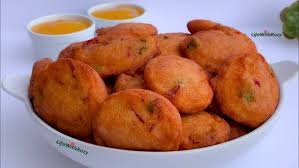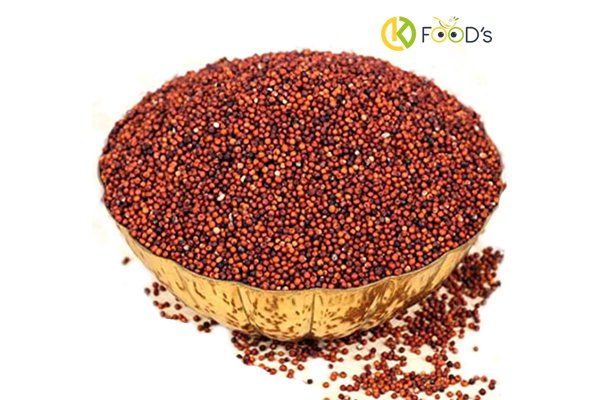Nutrition
Tubani

Tubani
Tubani is a meal mostly eaten by Northerners in Ghana. It is also referred to as steamed black-eyed peas pudding. It is usually taken with palm oil, groundnut and chilli pepper and enjoyed as a snack or lunch.
Ingredients
• Black eyed pea flour(white
beans flour) /cow pea flour
• Water
Preparation
1. Add water to the black eyed pea flour in a bowl and stir the mixture in a circular motion till mixture becomes fluffy.
2. Pour some water into a saucepan and put on fi re to boil.
3. Wash your banana leaves or corn husk and put some at the base of the saucepan on fire.
4. Put some of the fluffy mixture of black eyed pea flour and water into some of the leaves and wrap.
5. Put the wrapped food gently into the water on fire and leave to cook for some time.
6. Cover the saucepan with some of the leaves.
7. Cover with the saucepan’s lid and let it cook for about 20 minutes.
8. Remove it from the leaves in which it is wrapped and serve.
Source: zongorepublic.com
Benefits
The beans used in preparing tubaani (tubani/tumbaani) offers important nutrients needed for the body.
-Soluble fiber
Soluble fiber lowers blood cholesterol levels, thereby protecting one against heart diseases.
-Iron
The main ingredients in tubaani are beans. Beans contain iron which is essential in helping hemoglobin to carry oxygen in our blood energy.
-Folate
Folate, also known as vitamin B9 is found in beans. Folate is one of the B-vitamins and is needed to make red and white bloodcells in the bone marrow, convert carbohydrates into energy.
-Proteins
Tubaani is rich in proteins. Proteins are large molecules that our cells need to function optimally; they consists of amino acids. Proteins help in the regulation of the body’s cells, tissues and organs.
Source: https://myrecipejoint.com
Nutrition
Koose (fried cowpea bean cake)

Ingredients
• 300 grams of cowpea (dehusked) flour
• 200 ml of oil (for deep frying)
• 20 grams of ginger
• 10 grams of fresh or dry hot pepper
• 50 grams of onion (optional)
• 2 tablespoonfuls of salt
• 1000 ml water
Preparation
-Wash, peel ginger, hot pepper, onion (Grind or blend)
-Mix water with cowpea flour and beat until mixture is fluffy
-Add ground spices (ginger, hot pepper and onion) and salt to cowpea flour in bits and continue to beat
-Add water and stir to mix evenly and to obtain a soft dropping consistency cooking
-Put oil on fire and add chopped onions
-Drop mixture by spoonfuls in the hot oil and fry, turning occasionally until golden brown (frying may take about three minutes)
– Take the cakes from hot oil, drain in a colander and place on kitchen paper to extract excess oil
• Serve hot with corn, millet or sorghum porridge or alone as a snack
By Linda Abrefi Wadie
Nutrition
Benefits of millet

– High nutritional value: Millets are a rich source of nutrients, including protein, fibre, and micronutrients like magnesium, potassium, and zinc.
It also has a low glycemic index. This makes it an ideal food for people with diabetes or anyone looking to maintain stable blood sugar levels.
– Gluten free: Millet is naturally gluten-free, making it an excellent choice for those with celiac disease or gluten intolerance. It’s also a great alternative to wheat for people looking to reduce their gluten intake.
-Promotes digestive health – The high fibre content in millet makes it an excellent food for promoting digestive health. It can help to prevent constipation and reduce the risk of colon cancer.
-Aids weight loss – Millets have a low calorie count, and they are an excellent food product for weight loss. They help to maintain energy levels throughout the day, preventing the need for constant snacking and overeating. Millets also keep you satiated for longer than other carbohydrates, as they take time to get digested and absorbed into your body.
-Keeps blood sugar levels low – Millets have a low glycaemic index, which makes them an excellent food for regulating blood sugar levels. Consuming millets regularly can lower your risk of developing diabetes.
-Boosts Immunity – Millets provide a great source of protein and can help develop and strengthen your immunity. A stronger immune system means fewer chances of you catching diseases.
-Reduces cardiovascular risks – The essential fats found in millets provide our bodies with good fats which prevent excess fat storage, effectively lowering the risk of high cholesterol, strokes, and other heart complaints. The potassium content in millets regulates your blood pressure and optimises your circulatory system.
-Prevents asthma – The magnesium content in millets can reduce the frequency and severity of migraines and asthma complaints. Unlike wheat, they do not contain the allergens that lead to asthma and wheezing.
-Helps your digestion – Millets are a rich fibre source that benefits digestion by alleviating bloating, gas, cramping, and constipation. Good digestion keeps issues like gastric/colon cancer and kidney/liver complaints away.
-Acts as an antioxidant – Millets help the body detox because of their antioxidant properties. Quercetin, curcumin, ellagic acid, and other valuable catechins flush out toxins from your body and neutralise the enzymatic actions of your organs.
Source: wafflemill.com







